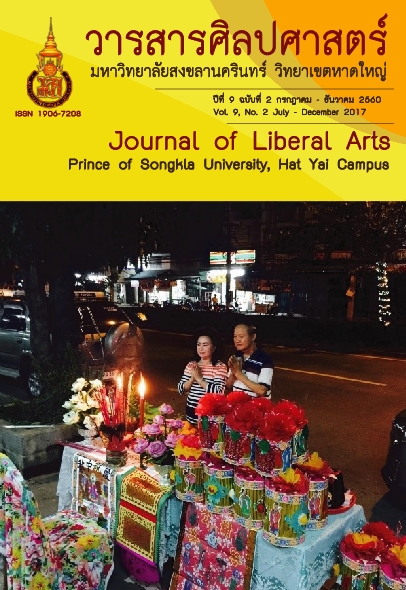An ethnosemantic study of dessert cooking terms in Patani Malay language
Keywords:
Patani Malay language, ethnosemantics, dessert cooking terms, dessert food cultureAbstract
The purpose of this study was to analyze the dimensions of contrast and the semantic components of dessert cooking terms in the Patani Malay language, and the dessert food culture of Patani Malay people in the three provinces of Pattani, Yala and Narathiwat. The theoretical framework employed was the componential analysis proposed by Katz, & Fodor (1963), Leech (1974), and Nida (1979).
The data was collected from the Patani Malay dictionary (Hayiyakoh, 2013), Pattani Malay dictionaries (Prince of Songkla University, 1984; Samaalee et al, 2007; Baru et al, 2008a), Southern Thai food cookbooks, and 36 informant interviews in Pattani, Yala, and Narathiwat. Twenty three dessert cooking terms were found in Patani Malay in six dimensions of contrast: purpose, heat, time, main ingredients, shapes of ingredients, and food texture. Each of these dimensions entailed the significant semantic features which distinguish one cooking term from others. The study revealed four aspects of dessert food culture of Patani Malay people: 1) Flour and sugar were basic ingredients; 2) The ingredients reflected a simple dietary lifestyle; 3) Patani Malay people used local wisdom of food preservation in cooking their desserts; and 4) The dessert cooking reflected the import of dessert food culture from neighboring countries.
Downloads
Published
How to Cite
Issue
Section
License

This work is licensed under a Creative Commons Attribution-NonCommercial-NoDerivatives 4.0 International License.
The authors retain the copyright to their article but the Journal of Liberal Arts, Prince of Songkla University reserves the exclusive rights to first publication.






